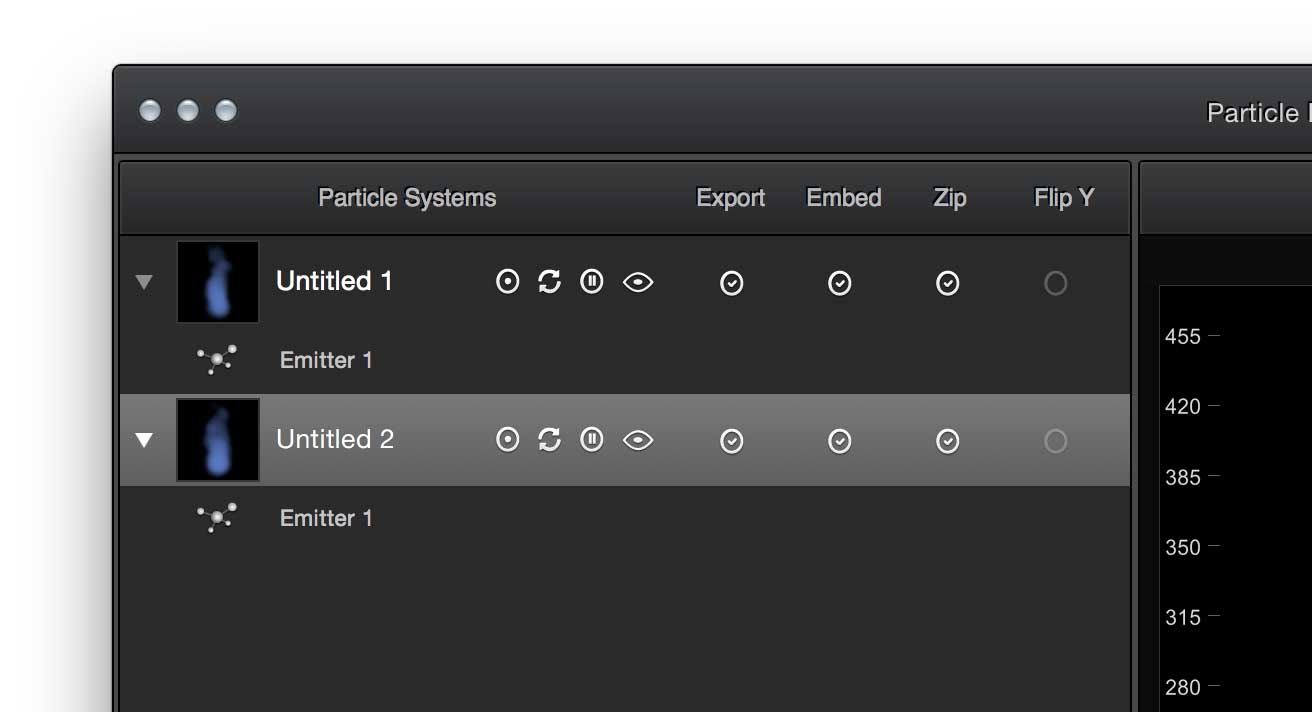
Be in mind you will have to build the system yourself to use it.

In case you want to recreate in your engine.

This one just export all the project data with emitters, parameters,etc. Use it only with max 60-120 frames, Scale 4 and with canvas width/height at 400x400. be sure your GPU can handle all this data due the spritesheep image will be so big. Be in mind that if you set Scale1, more than 100 frames, etc. This is the default method that should work with any setting. RENDER > If you want this image appears in the final render. IMPORT REFERENCE > Add an image as reference to see exactly how the FX will look in your game. Max 8.ĬANVAS WIDTH/HEIGHT > Resolution/size of each frame in the spritesheet. They are actually checboxes but in the future will be sliders too to config the amount of effect. The effects on this tab will be applied to the canvas as postprocess. This will give you more control about color. To set exactly the colors you want for Birth/Mid/Death of particle life press right-click on the RGB/HSV sliders under the color picker to set manually. Very useful too to create 1/2bit FX so the animation only will use 2,4. For example if you are doing a fire effect you can ignore blue/green colors. On palette selected you can ignore colors clicking on the color placed on the grid. By default applies a checks dithering due is the most used in pixel-art. Also you can import your own dither pattern. Here you can edit all the related with the color effect even set the dither amount.
#HOW TO IMPORT PARTICLE DESIGNER MANUAL#
Keep in mind that with manual rendering the loop animation is not possible due the movement effect is made manually. Just click in the particle render window and move. Draw the particle effect movement with the mouse. The Particle Swarm Search is one of the non-circular search options in Slide2 for locating critical slip surfaces. By default generates animations with 60 frames. Render FPS is useful to make your animation with less frames. Values than can break a loop animation are: Particle Number, Life of the particle and movement effects in the motion on tab inside particles. If you press "loop animation" and after you make some change you will need to press again the button so the tool can fix any possible problem. If you’d like to keep up to date with the latest changes and feature additions, please follow me or the official app account on Twitter.Loop Animation creates perfect seamless looped animations.
#HOW TO IMPORT PARTICLE DESIGNER DOWNLOAD#
I’ve got a lot of plans for the future, such as an online space where people can upload, view & download other people’s particle systems and bunch of other advanced features that I’ll talk about soon.įor now, if you have questions, comments or want to simply discuss things, please head over to the repo’s discussions page in Github. I’d rather wait until I’ve addressed the first round of major concerns before investing time into writing a guide. There’s also no fully fleshed out user guide or manual right now because I’m sure users will have a lot of feedback about the first draft for the UI. Particles can be rendered direct to the GPU making for some extremely performant effects.Īt present the app is in alpha and there may be issues, from UI bugs to performance problems, but I’m pleased enough with it to let people start playing around and see what kinds of things the community can create. With Nebula, you can create eye catching particle systems, save them as JSON and render them in any website or app that supports WebGL using three and three-nebula. I made it because I couldn’t find any way to visually and interactively create rich, eye catching particle systems for my engine that could potentially match those made for AAA games. Nebula was created as a branch from my game/game-engine creation project Project GoldScript.

I’m very proud today to introduce Nebula for desktop and its open source counterpart three-nebula - a WebGL based particle system designer and engine for three.


 0 kommentar(er)
0 kommentar(er)
